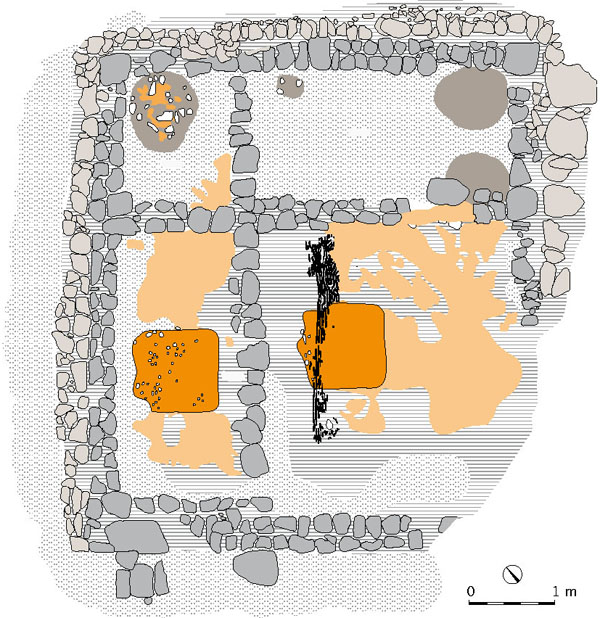Iron Age settlement at Most na Soči – the beginnings of urbanism in the southeastern Alps
-
Original Title
Železnodobna naselbina na Mostu na Soči − začetki urbanizma v jugovzhodnih Alpah
Project Team
Janez Dular, PhD, Lucija Grahek, PhD, dr. Boštjan Laharnar, Vesna Svetličič Turk, Snežana Tecco Hvala, PhD, Tjaša Tolar, PhD, Borut Toškan, PhD-
Project ID
J6-6835
-
Duration
1 October 2014–28 February 2018 -
Project Leader
Partners
Narodni muzej Slovenije
Most na Soči (also known as St Lucia) represents the premier archaeological site, where a large flat cemetery with close to 7000 graves from the Early Iron Age were excavated in the second half of the 19th century. The grave material played a major role in the development of prehistoric archaeology and provided a basis for solving the key chronological and cultural-historic problems. Settlement remains revealed above the confluence of the Soča / Isonzo and Idrijca Rivers by excavations of the Nova Gorica museum in 1970 has a similar importance. The breadth of the research on this settlement ranks it among the largest in the southeastern Alpine and northern Italian regions. A surface of over 40.000 m2 was unearthed and 41 houses were documented, of which as many as 32 dated to the Iron Age. All this material acquired by field research represents a sizeable potential for studies of living culture, architecture and urbanism, and everyday life between the Po plain and the Alps in the Iron Age, which is the aim of this project.

Most na Soči, ground plan of the Building 1
Within the scope of this project the field documentation, spatial, stratigraphic and chronological relationships between individual objects and structures is examined in detail. Other remains and products of human activity (construction techniques, interior furnishings, pottery and metal production, remains of fauna and flora) are analysed. These analyses are varied and include different methods and research specialties, ranging from archaeological to archeozoological, archeobotanic, technologic, spatial analyses, etc. The results of these analyses are interpreted and presented in a scientific monograph.
This publication provides an important contribution to the knowledge of living culture, urban organization, settlement development, and social and cultural processes in the first millennium BC, since no comparable publication has yet been produced for this particular time and area.
- DULAR, Janez, TECCO HVALA, Sneža (ur.). Železnodobno naselje Most na Soči. Razprave / The Iron Age Settlement at Most na Soči. Treatises, Opera Instituti archaeologici Sloveniae 34, 2018.
- Drago Svoljšak, Janez Dular, Železnodobno naselje Most na Soči. Gradbeni izvidi in najdbe / The Iron Age Settlement at Most na Soči. Settlement Structures and Small Finds. − Opera Instituti Archaeologici Sloveniae 33, 2016.